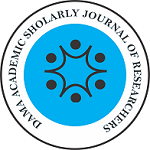Alex Appiah
Texila American University
*Correspondence: Alex Appiah, email: alexappiah1974@gmail.com
Abstract
The participation of informal self-employed workers in Ghana’s Tier-1 pension scheme remains significantly low, exposing them to financial insecurity in old age. This study analyses the barriers to participation, assesses the adverse effects of the current pension framework on informal workers, and evaluates a proposed model to increase enrollment in the scheme. Using a mixed-methods approach, the study collected quantitative and qualitative data from informal self-employed workers across various occupational groups in Ghana. Statistical analysis revealed that factors such as irregular income, lack of awareness, mistrust in pension institutions, and administrative challenges are the primary deterrents to participation.
The study further found that socioeconomic characteristics, including income level, marital status, and years of self-employment, significantly influence workers’ decisions to enrol in the Tier-1 scheme. Younger and lower-income workers face more significant obstacles in regularly contributing to the scheme. To address these challenges, the study proposes a model incorporating flexible contribution schedules, simplified registration processes, financial incentives, and awareness campaigns to enhance participation rates.
The findings underscore the need for policy reforms aligning pension schemes with informal workers’ financial realities. By implementing targeted interventions, policymakers and stakeholders can improve social security coverage for this crucial workforce segment. Future research should evaluate the proposed model’s implementation feasibility and long-term sustainability.
Keywords: Informal sector, self-employed workers, Tier-1 pension scheme, social security, pension participation, Ghana
Citation: Appiah., A., (2025), “Analysis of the Proposed Model to Help Improve the Participation of Informal Self-Employed Workers Under the Tier-1 Scheme”, Dama Academic Scholarly & Scientific Research Society 2024, 10(02): pp.19-26, DOI: https://dx.doi.org/10.4314/dasjr.v10i2.3

